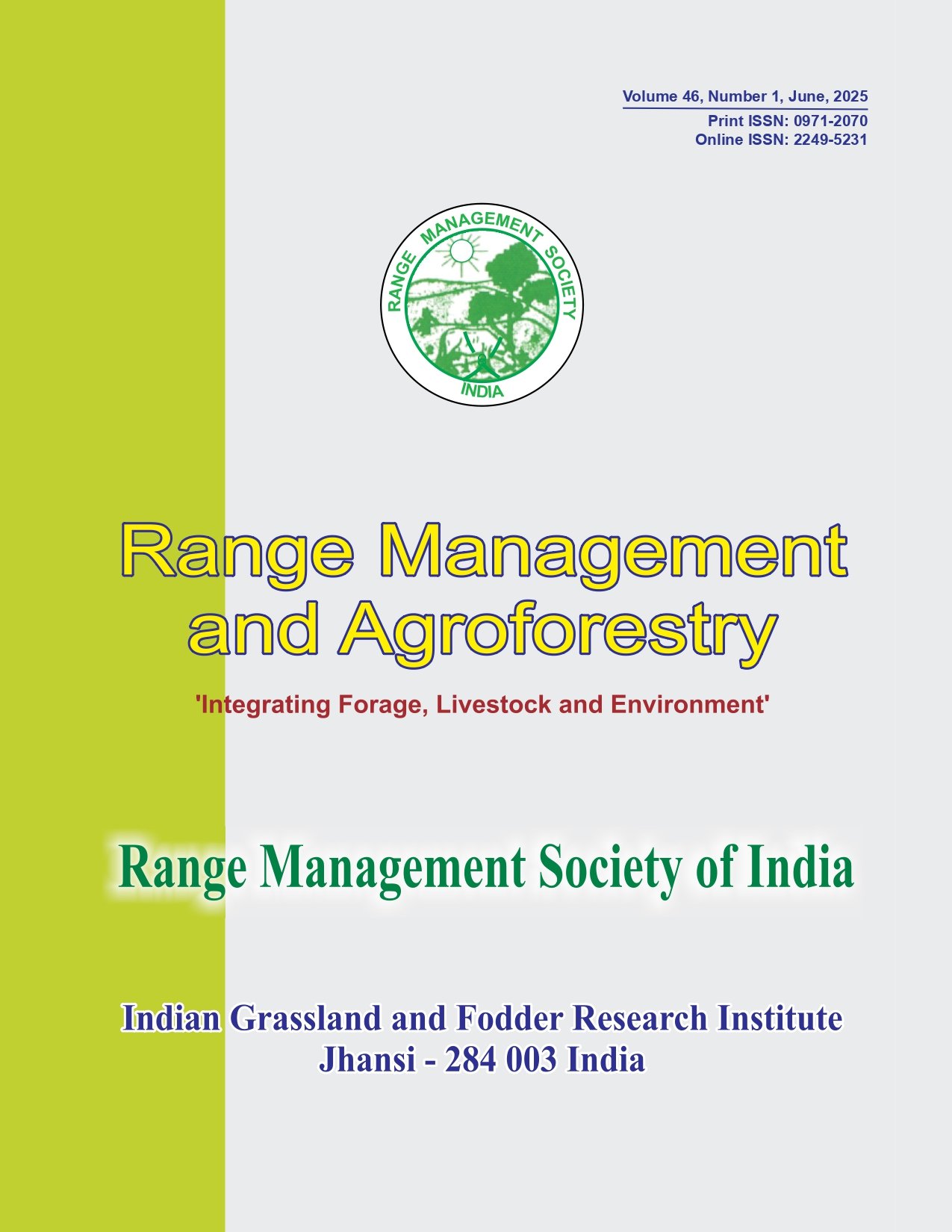Soil organic carbon sequestration potential and economic profitability of perennial forage crops under different mulching environments
Keywords:
Carbon sequestration, Economics, Mulching, Perennial forage cropsAbstract
A study was conducted to investigate the soil organic carbon sequestration potential and economic profitability of perennial forage crops under different mulching practices. Based on the field experiment and analysis, forage crop Setaria anceps was found as an economically viable crop as well as provided an efficient carbon sequestration system. Green forage productivity was 10.31-17.67% higher with live mulching during first year and 12.66-18.31% during second year when compared with no mulching and soil dust mulching. There was an improvement in soil organic carbon sequestration rate (4.15-12.37% higher over other treatments) and a decrease in bulk density with live mulching. Higher economic benefit was also obtained with live mulched plot. Live mulching also increased uptake of N, P and K by perennial forage crops significantly. It was concluded that live mulching with legumes in Setaria anceps was superior for improving productivity, profitability and environmental sustainability.




